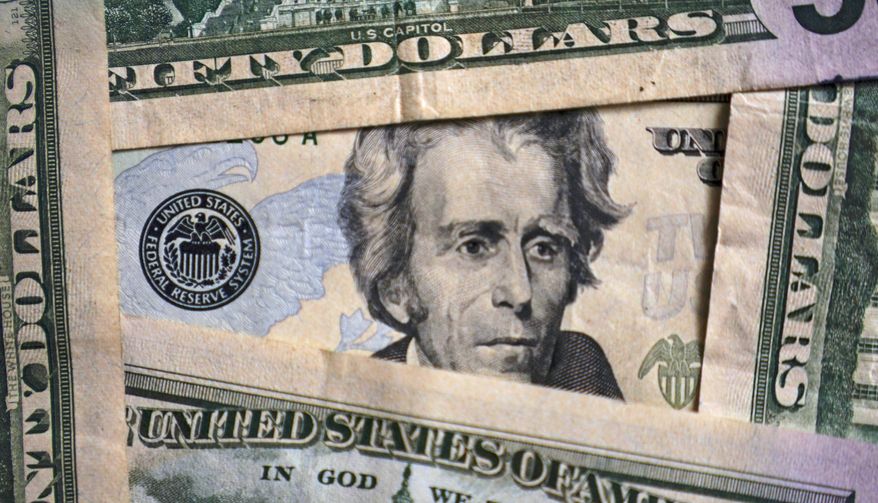Great inflations almost always end with a recession or depression. Some governments manage the end of inflation by creating policies to set the stage for a quick recovery and rapid growth, even though some months of pain are unavoidable.
The best example of this was the first two years of the Reagan administration, whose team understood that inflation was caused by the money supply growing faster than the supply of goods and services. The solution, though difficult, was obvious — reduce the growth in money and increase the supply of goods and services.
Inflation was running at over 13%, and the economy was in recession. Paul Volcker, the Fed chair at the time, raised interest rates sufficiently (at one point the prime rate was 21%) to extinguish the excess money growth. At the same time, the Reagan administration undertook massive tax rate cuts, coupled with spending restraint, and the repeal of many unnecessary regulatory burdens to revive economic growth. It worked beyond the expectations at the time; so by the third year of the administration, real economic growth was more than 7% with greatly reduced inflation.
Unfortunately, the current Fed and Biden administration have been too slow in learning the lessons of history. The Fed is just now beginning to reverse money growth, and the Biden team is still proposing more spending, taxes and regulations, all of which are job and economic growth killers. Even if the Fed suddenly starts doing everything correctly, it will be some time before inflation drops, because there is typically a long lag between changes in money growth and the rate of inflation.
The seeds of the current inflation were planted in early 2020 when the economy was shut down because of the pandemic, and the Trump administration and the Fed tried to paper over the loss in production and income by literally giving everyone money — causing an explosion in money growth not matched by an increase in the supply of goods and services.
The inflation caused by these policies only showed up about a year later. The economic shutdown was only supposed to last for a couple of weeks or a couple of months at most — but then it went on and on. The Fed should have reversed course by the time Biden took office, and the Biden administration should not have gone on their regulatory jihad, particularly starting a war against the oil industry — which they very stupidly continue. Even if the Fed and Biden administration started to do everything correctly, it still would likely take 12 to 18 months for non-inflationary growth to start again. By not immediately taking the necessary constructive actions, the Biden administration has not only guaranteed a bad economy this coming November but stagflation or worse going into the 2024 elections — meaning political suicide for the Democrats.
The worst-case scenario is if the Biden administration continues its anti-growth policies by pushing for higher taxes, more regulation and government spending, and the Fed becomes weak-kneed when it comes to necessary interest rate increases. Under this scenario, high inflation rates not only continue but rise, so eroding purchasing power that the people increasingly use foreign currencies, gold and silver, crypto-currencies, and digitized base metals in making contractual obligations and for spending on expensive items. In such a situation, the real value of the government debt is also eroded away, destroying wealth for both domestic and foreign bond-holders — but at the same time setting the stage for a new government-issued currency.
Over the last few decades, this scenario has played out in a number of Latin American and African countries, and notably in the socialist countries of Eastern Europe and those that were part of the Soviet Union — all of which established new currencies when the old ones became close to worthless. The irony is that some of the countries with the soundest fiscal and monetary situations in the world are the former socialist and occupied countries, like Bulgaria and Estonia. They first established currency boards, and have explicitly or implicitly become euro-based with low tax rates and little debt.
The value of the U.S. dollar remained more or less constant from 1792 until 1913 when the Fed was established, and the money was tied to gold and/or silver. The dollar is now worth about 1/29 of what it was in 1913. A continued high and even accelerating rate of inflation could result in the dollar having a value of as little as 1/100 of its 1913 value, while at the same time the real value of the government debt would plummet to near zero. This would set the stage for a newly elected reform government to establish something called perhaps the “traditional” dollar by knocking off two zeros from the current dollars, giving it an approximately 1913 purchasing power.
In the meantime, individuals and businesses will have become comfortable using various types of private digital currencies, which will compete with the new “traditional dollar.” Imposing a competitive discipline on both government and private currencies could lead to a much more stable world monetary order.
• Richard W. Rahn is chairman of the Institute for Global Economic Growth and MCon LLC.
https://www.washingtontimes.com/news/2022/jun/20/how-will-it-end-a-recession-is-likely-inevitable/
© Copyright 2022 The Washington Times, LLC.
